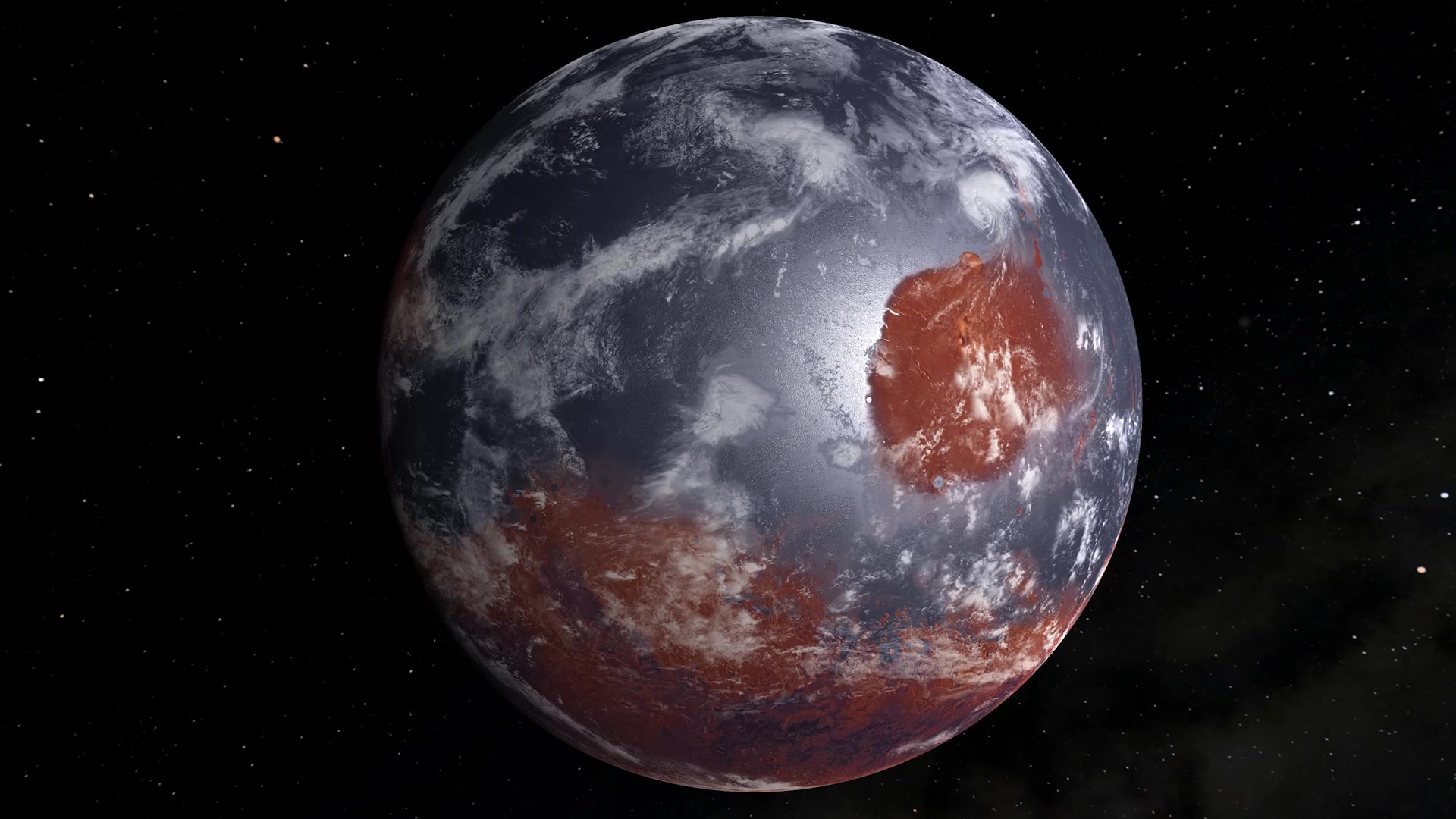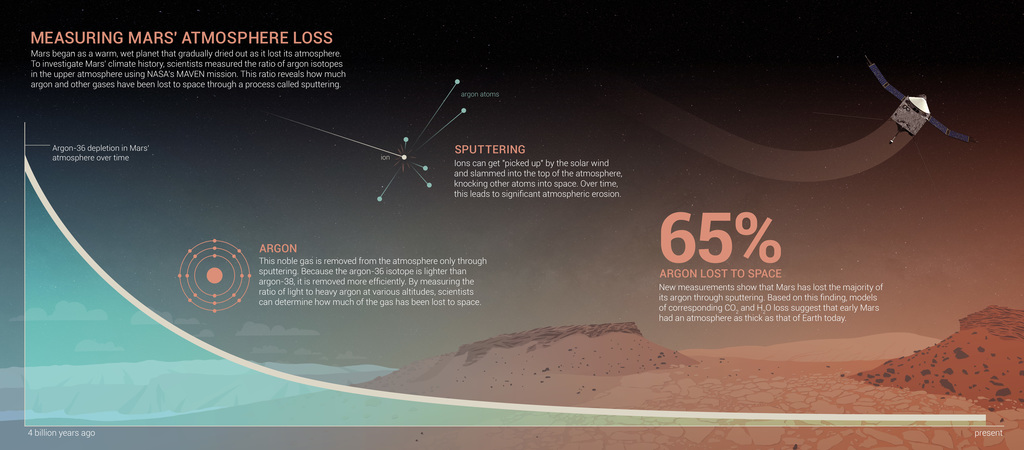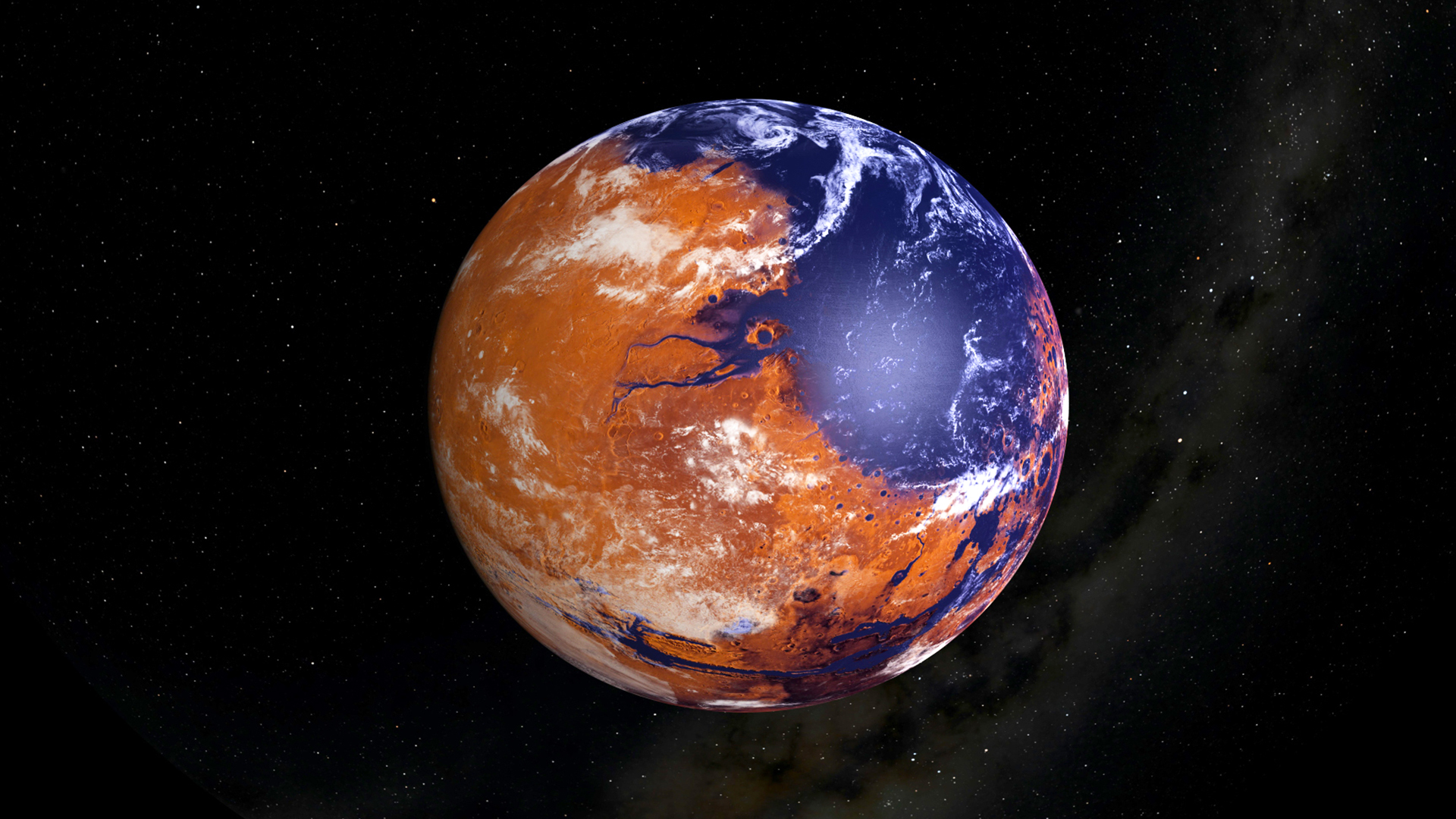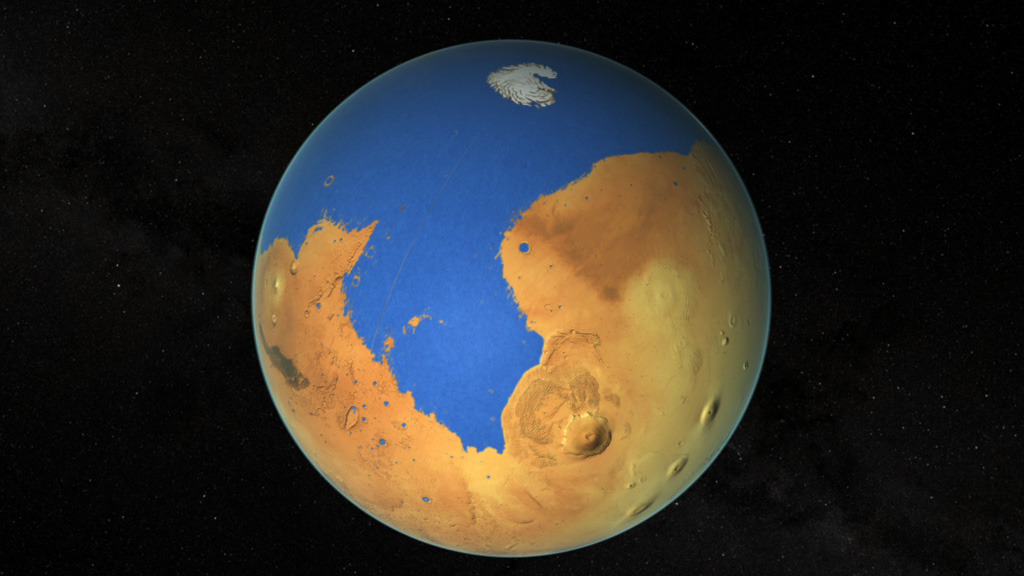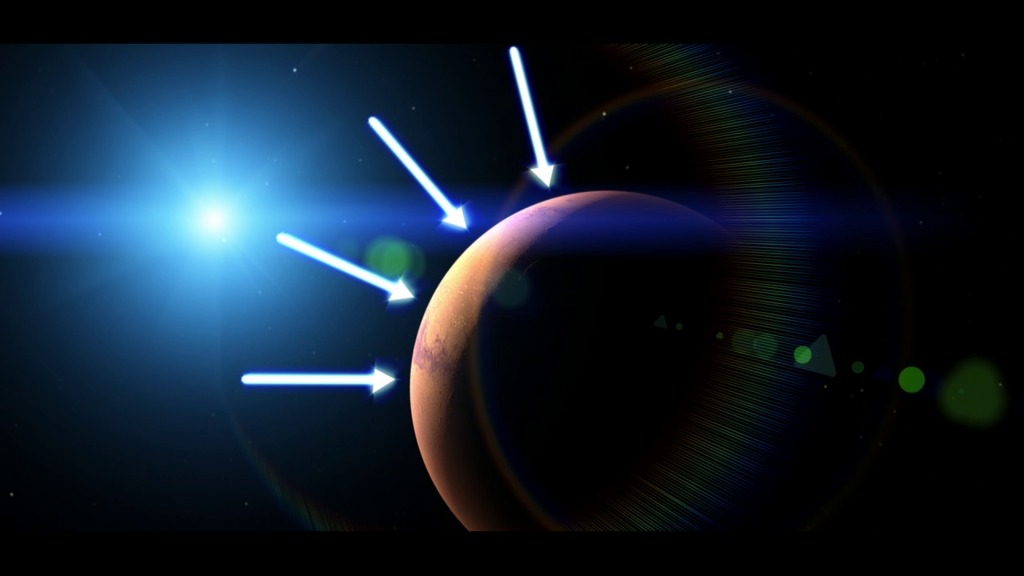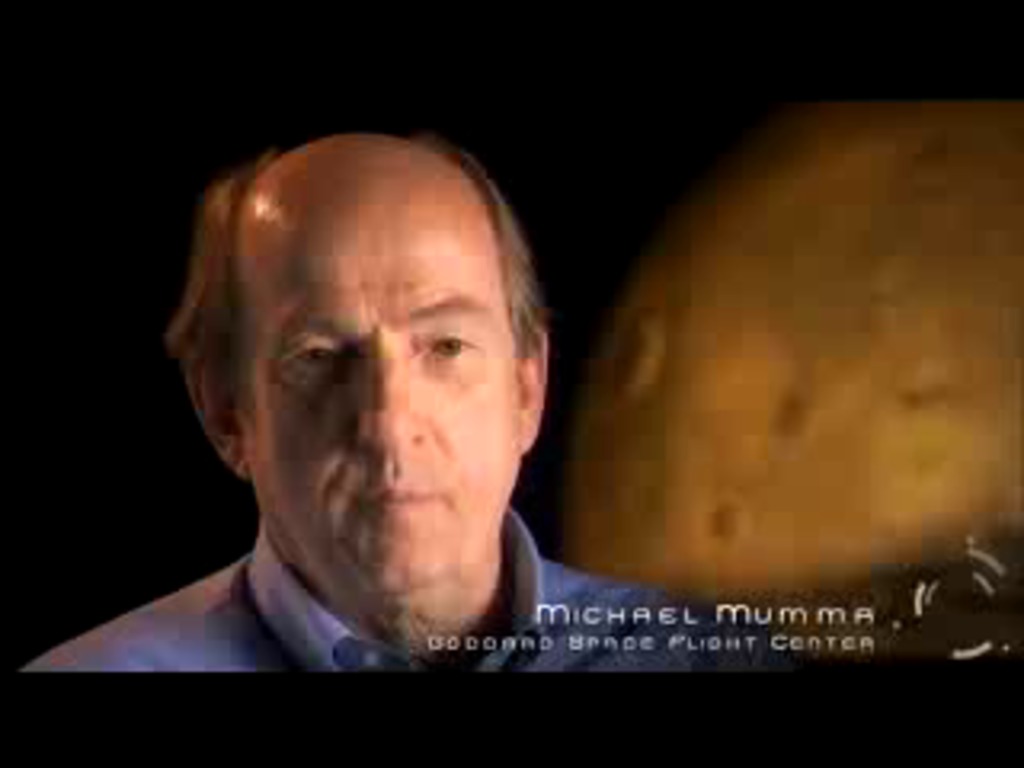Mars’ Ancient Ocean
NASA planetary scientists Geronimo Villanueva and Michael Mumma discuss their findings regarding the ancient ocean of Mars.
Watch this video on the NASAexplorer YouTube channel.
For complete transcript, click here.
For decades, planetary scientists have suspected that ancient Mars was a much warmer, wetter environment than it is today, but estimates of just how much water Mars has lost since its formation vary widely. Now, new isotopic measurements by researchers at NASA's Goddard Space Flight Center reveal that an ocean once covered approximately twenty percent of the Martian surface. This new picture of early Mars is considerably wetter than many previous estimates, raising the odds for the ancient habitability of the Red Planet.
Mars Ancient Ocean, short version
Watch this video on the NASAexplorer YouTube channel.
For complete transcript, click here.
El Océano Antiguo de Marte, vídeo en Español
Ver este vídeo en el canal NASAexplorer YouTube.
Para una transcripción completa, presione aquí.
Animation - Mars present-day to 4.5 billion years ago
Animation - The ancient ocean of Mars retreats toward the polar ice caps, which are the main reservoirs of water on the planet today.
Animation - Hydrogen atoms escape from the Mars upper atmosphere, while water containing heavy hydrogen (deuterium) remains trapped on the planet. The escape of hydrogen helped to turn Mars from a wet planet 4.5 billion years ago into a dry world today.
Video Resource Reel - contains interviews with NASA scientists Geronimo Villanueva (pictured) and Michael Mumma

Image - a print-resolution still

Image - a print-resolution still on a transparent background
Credits
Please give credit for this item to:
NASA's Goddard Space Flight Center
-
Planetary scientist
- Geronimo Villanueva (Catholic University of America)
-
Scientist
- Michael Mumma (NASA/GSFC)
-
Producer
- Dan Gallagher (eMITS)
-
Editor
- Dan Gallagher (USRA)
-
Animators
- Walt Feimer (HTSI)
- Brian Monroe (USRA)
- Michael Lentz (USRA)
- Chris Smith (Self)
-
Videographers
- Rob Andreoli (Advocates in Manpower Management, Inc.)
- John Caldwell (Advocates in Manpower Management, Inc.)
-
Science writer
- Elizabeth Zubritsky (ADNET Systems, Inc.)
-
Writer
- Dan Gallagher (USRA)
-
Narrator
- Dan Gallagher (USRA)
-
Narrator (spanish)
- Geronimo Villanueva (Catholic University of America)
-
Assistant editor
- Swarupa Nune (InuTeq)
-
Technical support
- Aaron E. Lepsch (ADNET Systems, Inc.)
Series
This page can be found in the following series:Tapes
The media on this page originally appeared on the following tapes:-
Mars Ocean
(ID: 2015011)
Sunday, March 1, 2015 at 5:00AM
Produced by - Dan Jacob (Global Science and Technology, Inc.)
Release date
This page was originally published on Thursday, March 5, 2015.
This page was last updated on Wednesday, May 3, 2023 at 1:49 PM EDT.


